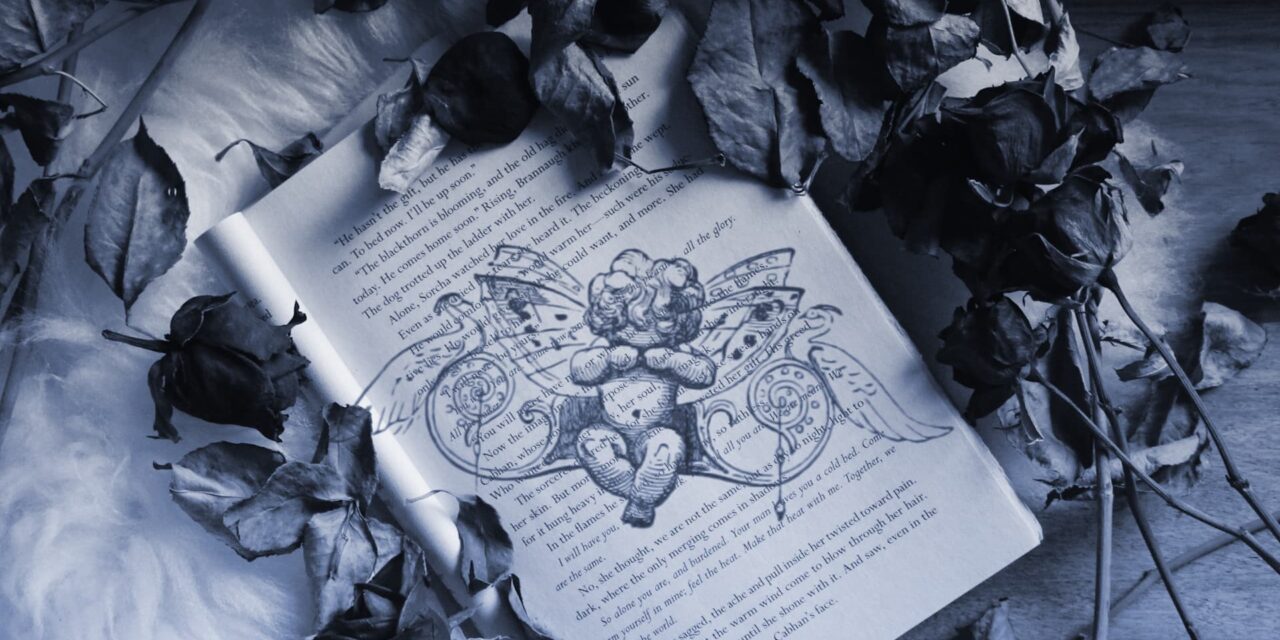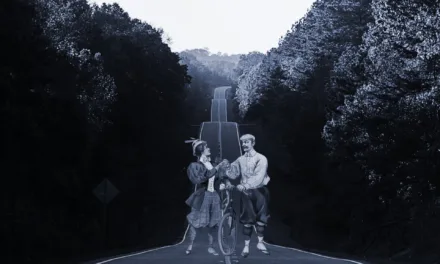
How to Write the Perfect Romance Novel (with Downloadable Template)

The romance genre is a tapestry of human emotions that has captivated the hearts of readers for centuries. With a myriad of sub-genres—ranging from historical to contemporary, paranormal to romantic comedy—romance novels offer a rich and varied landscape for creative exploration.
At its core, a romance novel is more than just a tale of love; it’s a reflective mirror of our deepest desires and fears. As a genre, it celebrates the triumph of the human spirit through the power of emotional bonds, and offers readers escapism with the hope of “happily ever after.”
In this guide, we peel back the layers of the classic romance narrative, breaking down the essential components that make a romance novel resonate with readers. Whether you’re a seasoned writer looking to refine your craft or a newcomer eager to pen your first love story, this plot breakdown can help provide a structural blueprint to help your next romance writing project.
“Every great love starts with a great story…”
Nicholas Sparks, The Notebook

Part 1: The Ordinary World
In every romance novel, the journey begins somewhere familiar, a place where the protagonist is comfortable. A window into their life before it’s upended by love.
The Ordinary World serves several pivotal functions in storytelling. Firstly, it grounds your readers in the protagonists’ reality by offering a glimpse into their daily life. Readers can form a connection with your protagonist by understanding their routines, desires, values, and the social fabric that makes up their existence.
Your protagonist’s Ordinary World isn’t just a backdrop; it’s a narrative device that foreshadows the protagonist’s arc and the thematic elements you want to explore as the story progresses. In a romance novel, the Ordinary World might also subtly hint at the protagonist’s deep-seated yearnings and the void that love will eventually fill.
Essential elements to include in this section are:
- Introduce the protagonist: who is your character? What do they do? What are their relationships? Your protagonist should be content with life but unaware that they are missing love.
- Establish the setting: whether your story takes place in a picturesque small town with a close-knit community or a bustling cityscape where everyone seems to be in a rush, your setting is an essential backdrop to where the romance will take place. Even if the romance happens away from the initial setting, showing the contrast between the protagonist’s ordinary world and where love can flourish can be effective.
- Show a daily routine: Your protagonist’s routine should be well-ordered and predictable, involving work, friends, possibly a pet or a hobby that they love. This will highlight the change that happens when they finally find love.
Part 2: The Meet Cute
Every great romance novel hinges on a pivotal moment that ignites the flame of love—a moment known affectionately as “the Meet Cute.” This is the moment where your protagonist encounters their love interest under circumstances that are charmingly serendipitous and brimming with potential.
The Meet Cute is the first element that will push your protagonist out of the status quo of their Ordinary World. Despite the defences that the characters have built around their hearts, the Meet Cute allows a glimpse of the possibility, however fleeting, of love.
Crafting the perfect Meet Cute requires a delicate balance. It should feel both utterly unexpected and entirely inevitable, a delightful dance of happenstance and fate. Whether it’s a chance encounter that leads to a comedic mishap or a poignant intersection of lives in an otherwise ordinary day, the Meet Cute plants the seeds of romance.
Essential elements to include in this section are:
- A catalyst event: The protagonist has an unexpected, quirky, and charming first encounter with their Love Interest.
- First impressions: There’s an undeniable spark, but both have their defences up for various reasons. There are many tropes that can come into play here, from bad first impressions, love at first sight, or forced proximity.
- Showcase instant connection: No matter what the first impression is like, there should be some kind of instant connection that forces the characters to think about each other or means they will be in each other’s company a lot.
Part 3: Resistance to Love
In this crucial turning point of your romance novel, the magnetic pull of attraction meets the immovable force of inner turmoil. It’s a testament to the complexity of the human heart, a demonstration that the path to love is often strewn with hurdles, both internal and external.
Here, the protagonist confronts their doubts and fears about pursuing a relationship. This is a dance of advance and retreat that tests the strength and resilience of the budding connection between the protagonist and their love interest.
Resistance to Love serves as an emotional crucible, forging a deeper understanding of your characters. In this section of your narrative, you must portray the nuanced struggle that accompanies the realisation of love. Your characters must grapple with the cost of opening their hearts, the possibility of pain, and the leap of faith required to embrace true intimacy.
Essential elements to include in this section are:
- Introduce obstacles: These could be your protagonist’s past experiences, a fear of being vulnerable, or external factors like career ambitions, societal pressures, or health concerns.
- The opinions of friends: Some of the protagonist’s friends may question the wisdom of this new relationship, or others might be supportive, pushing your protagonist to open their heart and take a chance.
- Show inner conflict: The protagonist grapples with their growing feelings, conflicted between the safety of their familiar world and the risk of embracing love.
Part 4: That’s Convenient
In this section, the stars align to cast your characters into the embrace of serendipity. It’s the orchestration of seemingly random events that are anything but; a narrative nod to the universe’s unseen hand in guiding the course of love.
Here, your protagonist should receive a gentle nudge or a forceful push, propelling them closer to their love interest. This is where popular romance tropes will play a big part. Some ideas could be an unexpected ally, forced proximity, or a fake relationship.
This segment of the narrative is critical—it is the turning of the tides, the softening of the protagonist’s resolve. This section serves as the bridge between resistance and romance, a necessary passage that allows your characters to explore the depth of their connection in close quarters, setting the stage for the emotional revelations to come.
Essential elements to include in this section are:
- An unexpected ally: Someone close to the protagonist encourages them to take a chance on love, or forces them into a situation where they must explore it.
- Forced proximity: Circumstances push the protagonist and their love interest together, like a work project or a mutual friend’s event.

Part 5: Getting to Know You
In this section of your story, the tough facade of the protagonist falls away, piece by piece, and they allow themselves to really get to know their love interest. Walls are lowered, and both the protagonist and their love interest are open to sharing their true selves.
Against the backdrop of shared laughter and whispered confidences, your protagonists will explore the uncharted territory of love. Here, they are more than just love interests; they are potential partners, seeking the common ground upon which a lasting bond might be built.
This phase of the narrative is imbued with a sense of wonder and discovery. It is in these moments that the seeds of love, sown in the earlier chapters, begin to sprout. Shared personal stories, dreams, fears, and laughter are what will draw the reader in, and allow your characters to convey the nuance of budding intimacy. Every shared secret, every moment of vulnerability, every discovery of a shared interest or history is a step closer to love.
Essential elements to include in this section:
- Share intimate moments: The protagonist and love interest start sharing personal stories, dreams, fears, and laugh together.
- Find common ground: The characters discover that they share surprising interests or have similar histories.
Part 6: Coming Around to the Idea of Love
This section is where your protagonist starts to see their world differently, their heart slowly opening to the possibilities that love brings. It’s a subtle shift, but one that changes everything.
After spending time together with their love interest and getting to know their quirks and dreams, your protagonist begins to reconsider what they thought they knew about love. It’s no longer just a far-off concept or a fleeting thought; it’s becoming a real possibility that’s both exciting and a little scary.
In this part of the story, we watch as the protagonist and their love interest start to care deeply for one another. It’s a dance of emotions where being vulnerable feels risky, but also right. They’ve laughed together, shared secrets, and found out they’re not so different after all. Now, they’re coming to terms with the fact that this person, who was once a stranger, has become incredibly important to them.
Essential elements to include in this section:
- Character growth: The protagonist begins to see life from a new perspective, influenced by their love interest’s views and actions.
- Emotional depth: The protagonist and love interest begin to care deeply for each other, willing to be vulnerable.
Part 7: We Knew It Couldn’t Last
This is where your story takes a dramatic turn. Until now, your protagonist has been enjoying the sweet moments of getting closer to their love interest, but as with all great love stories, trouble is just around the corner. This part of the narrative reminds us that the road to true love is rarely smooth.
Just when things seem to be going perfectly, a challenge or misunderstanding appears and threatens the happiness of your characters. The strong bond they’ve been building is shaken, and doubts fill their minds and the characters must face the reality that their relationship might not be as solid as they thought. Your protagonist starts to question if they should be together.
Essential elements to include in this section:
- Introduce conflict: Misunderstanding or external conflict threatens the growing bond between your protagonist and their love interest.
- Questioning the relationship: One, or both characters start to question whether they should be together after all.
Part 8: Is This Goodbye?
In this section, the obstacles your characters have faced seem too big to overcome. It feels like the end of the road for your couple, and the possibility of parting ways becomes all too real.
This is the low point where your protagonist faces the deepest pain. A major event or realisation has turned their world upside down, and it looks like the relationship is over for good. Amidst this turmoil, your characters are left to grapple with their feelings and the heavy weight of their decisions.
Here, your protagonist is challenged to confront the true depth of their emotions. It’s a test of their love and resilience, but there’s a glimmer of hope that love can still find a way.
Essential elements to include in this section:
- Pivotal low point: A major event or realisation makes it seem like the relationship is over for good.
- Emotional turmoil: The protagonist grapples with the loss of their relationship and what it means for them both now, and in the future.

Part 9: Rekindling the Relationship
After the storm comes the calm, and in this section of the story, the calm ushers in a chapter of renewal. This is where your characters, after facing the possibility of losing each other, begin to find their way back to love. The journey isn’t easy, but the most precious things in life seldom are.
The beauty of this section lies in showing character growth. A grand gesture, a shocking event in their personal life, or a heartfelt conversation can act as the catalyst for your protagonist to realise that love has not been lost. It’s a reminder that sometimes, we must fight to keep the flame of love alive.
Here, the protagonist comes to understand the true depth of their feelings. The risks and fears that once seemed so daunting now pale in comparison to the thought of being without their love interest. It’s a time for bold moves, for laying hearts on the line, and for the kind of honesty that can heal past hurts.
Essential elements to include in this section:
- A catalyst for change: This could take many forms, from a grand gesture on the part of the love interest, and personal shock or tragedy for the protagonist, or even a change in circumstance; anything that prompts a change in viewpoint that allows the protagonist to see the truth of their love.
- The protagonist’s realisation: The protagonist must come to understand the true depth of their feelings and what they are willing to risk for love.
Part 10: Love is Worth Fighting For
In this section, our characters truly understand that their love is special, and they’re ready to do whatever it takes to make it work. They’ve been through tough times, and now they see that their relationship is worth the effort.
In this part of the story, your protagonist and their love interest work together to overcome their problems. They talk, they listen, and they learn to compromise. It’s not just about feeling love; it’s about acting on it, showing each other that they’re committed to making things better.
This section is about showing your characters building a stronger and more resilient bond. The couple has weathered the storm, and now they’re ready to face the future together, knowing that they can handle anything as long as they have each other.
- Working together: Your protagonist and love interest actively address their issues, learn to compromise, and fight for their relationship.
- Stronger bond: The relationship between your characters is now stronger and more resilient, having weathered the storm. Show this strength in the way they behave and speak to one another, and ramp up the passion.
Part 11: Happily Ever After
As the story reaches its finale, we see the rewards of all the struggles and challenges your protagonist has faced. They’ve learned that love is not just a feeling, but a choice to stand by each other, through good times and bad.
In this section, your readers will get a glimpse into the future of your couple. They’re enjoying life together, blending their dreams and aspirations into a shared reality. It’s the part of the story where everything comes together, and we see that your protagonist has found a balance between love and life.
- Hints of the future: Show the couple enjoying their new life together, incorporating both of their dreams and aspirations into a new shared reality.
- New status quo: Your protagonist will have found a balance in life and love, creating a new status quo in contrast to the Ordinary World original set up in the opening moments of your story.
Download the template
You can download the template below to use it for your next project and import it directly into Novlr. If you go to the Projects page from your Novlr dashboard and click on “Import,” the template will automatically split your project into sections for easy plotting!
There is no “right” way to outline a romance novel. That’s why there are lots of different story structures out there. The trick is finding one that works for you and adapting it to suit your needs. Once you understand the way story structure works, it’s easy to bend the rules to make something completely unique to you.
What a good plot template can do is provide a springboard for your ideas, giving them fertile soil in which your imagination can help them flourish into the novel they deserve to be.

























